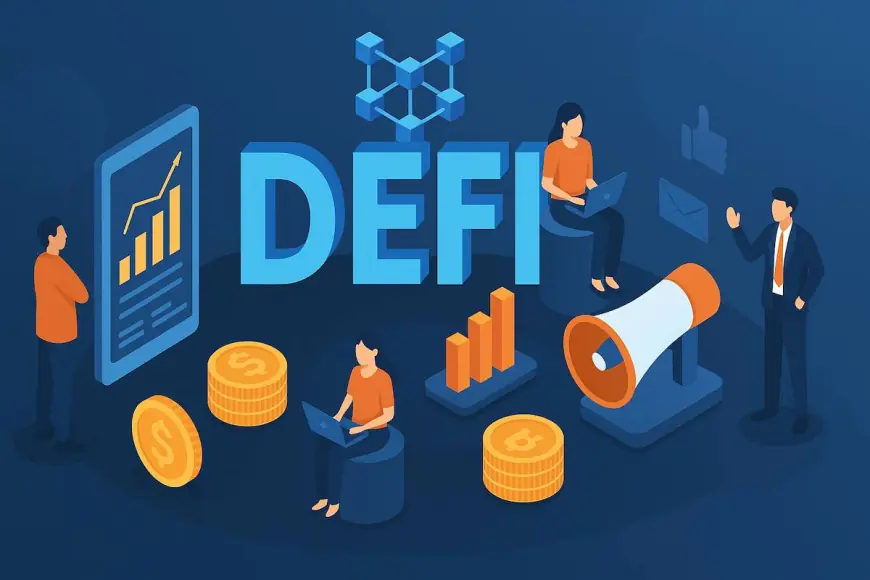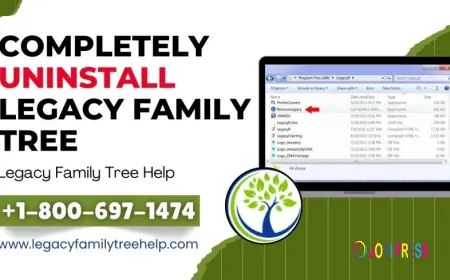How to Launch a DeFi Token in 2025?
Learn the complete roadmap to launch a successful DeFi token in 2025, from tokenomics and smart contracts to marketing, community building, and regulatory compliance.

The decentralized finance (DeFi) ecosystem has grown exponentially over the past few years, providing an alternative to traditional financial services through blockchain technology. Launching a DeFi token in 2025 is no longer just about coding a token; it’s about creating a sustainable project that solves real-world problems while attracting a strong community and maintaining regulatory compliance. In this blog, we will explore the complete roadmap to launch a DeFi token in 2025, from planning and development to marketing and compliance.
Understanding DeFi Tokens
A DeFi token is a digital asset created on blockchain platforms like Ethereum, Binance Smart Chain, or Solana that represents value, governance, or utility within a decentralized finance ecosystem. Unlike traditional cryptocurrencies, DeFi tokens often serve multiple purposes, including staking, governance voting, liquidity provision, or rewards distribution. In 2025, DeFi tokens will likely integrate advanced functionalities, such as AI-powered yield optimization, cross-chain interoperability, and real-world asset representation, making them more versatile than ever. Before launching a token, it’s essential to clearly define its purpose, utility, and target audience to ensure long-term success.
Setting Clear Objectives
The first step in launching a DeFi token is defining the objectives of your project. Are you creating a governance token for a decentralized autonomous organization (DAO), a utility token for accessing specific financial services, or a token designed to incentivize liquidity providers? Clear objectives not only guide development but also attract potential investors and users. In 2025, investors are expected to prioritize projects with transparency, measurable impact, and innovative features. Therefore, a well-defined roadmap with short-term milestones and long-term vision is crucial for building trust within the community.
Choosing the Right Blockchain
Selecting the blockchain for your DeFi token is a critical decision that affects scalability, transaction speed, and cost. Ethereum remains the most popular platform for DeFi due to its robust smart contract capabilities and large developer ecosystem. However, alternatives like Binance Smart Chain, Solana, Avalanche, and Polygon offer lower transaction fees and faster processing, which are appealing for users and liquidity providers. Additionally, cross-chain compatibility is becoming a major trend, enabling tokens to interact with multiple blockchain networks. Evaluating blockchain features, security, and ecosystem support is essential before deployment.
Tokenomics Design
Tokenomics, or the economic structure of a token, determines its supply, distribution, utility, and incentives. In 2025, well-structured tokenomics are critical for long-term sustainability. Consider total token supply, initial allocation, staking rewards, liquidity incentives, and burn mechanisms to manage scarcity and demand. Fair token distribution prevents centralization and ensures the community feels invested in the project. Additionally, incorporating deflationary or reward-based mechanisms can increase token value and encourage participation. Clear communication of tokenomics builds investor confidence and attracts early adopters.
Smart Contract Development
Smart contracts are the backbone of DeFi tokens, automating transactions, staking, and governance functions. Writing a secure and efficient smart contract requires experienced developers who understand Solidity, Rust, or other blockchain programming languages depending on the platform. In 2025, incorporating security best practices is essential due to the increasing number of DeFi hacks and exploits. Features like upgradeable contracts, multi-signature approvals, and time-locked functions improve security and operational flexibility. Conducting rigorous internal audits during development helps minimize vulnerabilities before deployment.
Security Audits
A professional security audit is non-negotiable when launching a DeFi token. Leading audit firms review smart contract code to identify vulnerabilities, logic errors, or potential exploits. In addition to traditional audits, penetration testing and bug bounty programs are gaining popularity, allowing external ethical hackers to identify weaknesses. In 2025, security will remain a major factor for investors and users, as any exploit can result in significant financial losses and reputational damage. Publishing audit reports transparently boosts credibility and demonstrates a commitment to safety.
Legal and Regulatory Compliance
Regulatory landscapes for DeFi tokens are evolving rapidly worldwide. Countries are introducing stricter guidelines around token offerings, securities laws, and Know Your Customer (KYC)/Anti-Money Laundering (AML) requirements. Consulting legal experts to classify your token—whether it is a utility token, security token, or governance token—is essential to avoid legal complications. In 2025, adhering to regulations will not only prevent fines but also attract institutional investors who require compliant investment opportunities. Proactive compliance can set your project apart from competitors and build long-term trust.
Launch Strategy: ICO, IDO, or IEO
The method of token launch significantly influences its adoption and initial liquidity. Initial Coin Offerings (ICO), Initial DEX Offerings (IDO), and Initial Exchange Offerings (IEO) are popular strategies for distributing DeFi tokens. IDOs have gained traction due to their decentralized approach and reduced dependency on centralized exchanges. Selecting the right launch strategy involves evaluating market reach, platform reputation, and community engagement. Combining pre-launch marketing campaigns with tokenomics incentives ensures strong initial demand and sets the stage for sustainable growth.
Building a Community
A strong community is the backbone of any successful DeFi project. Engaging potential users on platforms like Telegram, Discord, Twitter, and Reddit builds trust and encourages participation. In 2025, communities will demand transparency, real-time updates, and active governance participation. Hosting AMAs, webinars, and educational content strengthens engagement while incentivizing early adopters with token rewards. Community-driven governance models allow users to vote on protocol upgrades, liquidity allocation, or new features, reinforcing decentralization and long-term project sustainability.
Marketing Your DeFi Token
Effective marketing ensures that your DeFi token reaches a wider audience. Content marketing, influencer collaborations, and social media campaigns are crucial to educate users about your project’s utility and benefits. In 2025, a multi-channel approach combining online campaigns, press releases, and community events will enhance visibility and trust. Highlighting security audits, partnerships, and unique tokenomics attracts both retail and institutional investors. Transparent communication about project milestones and achievements further solidifies credibility in a competitive market.
Listing on Exchanges
Token listing on exchanges increases liquidity and market access. Centralized exchanges (CEX) like Binance, Coinbase, and Kraken provide large user bases but may involve strict listing criteria. Decentralized exchanges (DEX) like Uniswap, PancakeSwap, and Raydium allow instant listing but require sufficient liquidity pools for smooth trading. Strategically choosing exchanges based on target markets, fees, and reputation is crucial for maximizing token adoption. Additionally, cross-listing on multiple platforms can expand reach and encourage wider trading participation.
Staking and Liquidity Incentives
Staking and liquidity incentives play a critical role in attracting users to your DeFi token. Offering staking rewards encourages token holders to lock their assets, reducing circulating supply and stabilizing the token price. Similarly, liquidity mining programs incentivize users to provide liquidity on decentralized exchanges, enhancing market depth and trading efficiency. In 2025, integrating automated yield optimization strategies or AI-powered staking can offer higher returns and increase user engagement. Designing incentives aligned with long-term goals ensures token sustainability and community loyalty.
Continuous Development and Upgrades
Launching a DeFi token is only the beginning; continuous development is crucial for staying competitive. Regular upgrades, feature additions, and protocol optimizations improve user experience and maintain relevance. In 2025, integrating AI analytics, cross-chain compatibility, and decentralized governance will likely become standard expectations. Active development signals commitment to project growth and helps retain community interest. Transparent roadmaps with quarterly updates and milestone achievements also strengthen investor confidence.
Monitoring Market Trends
DeFi is a dynamic ecosystem, and monitoring market trends is essential to adapt strategies effectively. Tracking competitor launches, emerging protocols, and regulatory changes allows your project to innovate continuously. Market analysis tools, on-chain analytics, and community feedback provide insights into user behavior and token performance. In 2025, projects that leverage real-time data and predictive analytics will gain a competitive edge, ensuring their token remains relevant and attractive to investors.
Risk Management
DeFi projects face inherent risks, including smart contract exploits, market volatility, regulatory changes, and liquidity crises. Implementing risk management strategies is vital for project longevity. Insurance protocols, diversified liquidity pools, and treasury management can mitigate financial losses. Educating the community about risks and maintaining open communication ensures informed participation and reduces panic during market fluctuations. In 2025, projects with robust risk mitigation frameworks will earn stronger community trust and long-term sustainability.
Future Outlook of DeFi Tokens
The future of DeFi tokens in 2025 looks promising, with innovations in interoperability, AI integration, and real-world asset tokenization. Projects that focus on security, transparency, and community governance will likely lead the market. DeFi tokens will not only provide financial services but also create new economic models and incentives, bridging the gap between traditional finance and blockchain ecosystems. Launching a successful DeFi token in 2025 requires a blend of technical expertise, marketing strategy, legal compliance, and community engagement, ensuring the project can adapt and thrive in a competitive landscape.
Conclusion
Launching a DeFi token in 2025 is a multi-faceted process that requires strategic planning, technical development, community engagement, and regulatory compliance. From defining token utility and tokenomics to executing marketing strategies and securing exchange listings, every step plays a crucial role in long-term success. By focusing on transparency, security, and innovative solutions, your DeFi token can achieve sustainable growth and adoption. The projects that succeed will not only offer financial benefits but also contribute to shaping the future of decentralized finance.
What's Your Reaction?
 Like
0
Like
0
 Dislike
0
Dislike
0
 Love
0
Love
0
 Funny
0
Funny
0
 Angry
0
Angry
0
 Sad
0
Sad
0
 Wow
0
Wow
0

















































